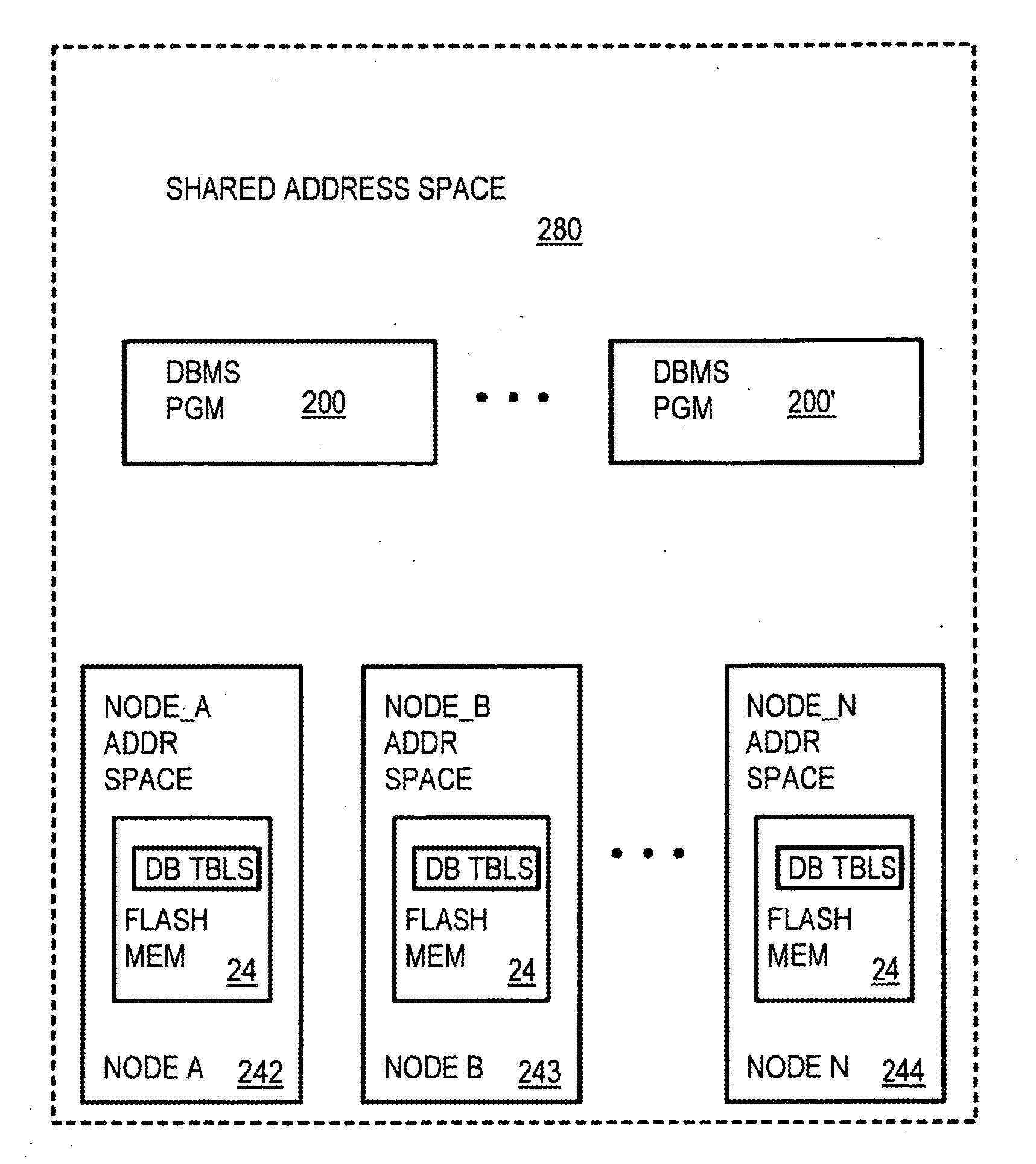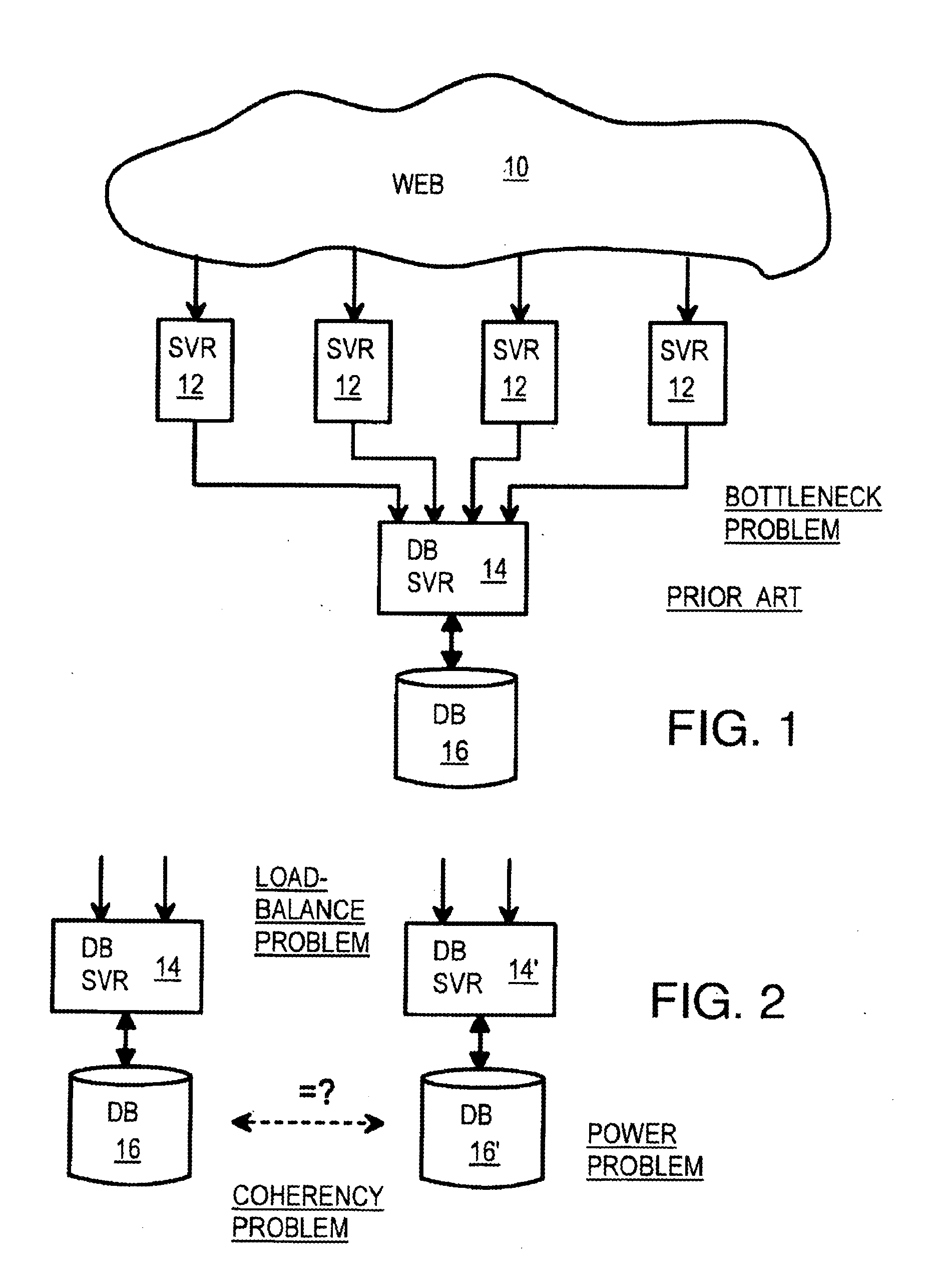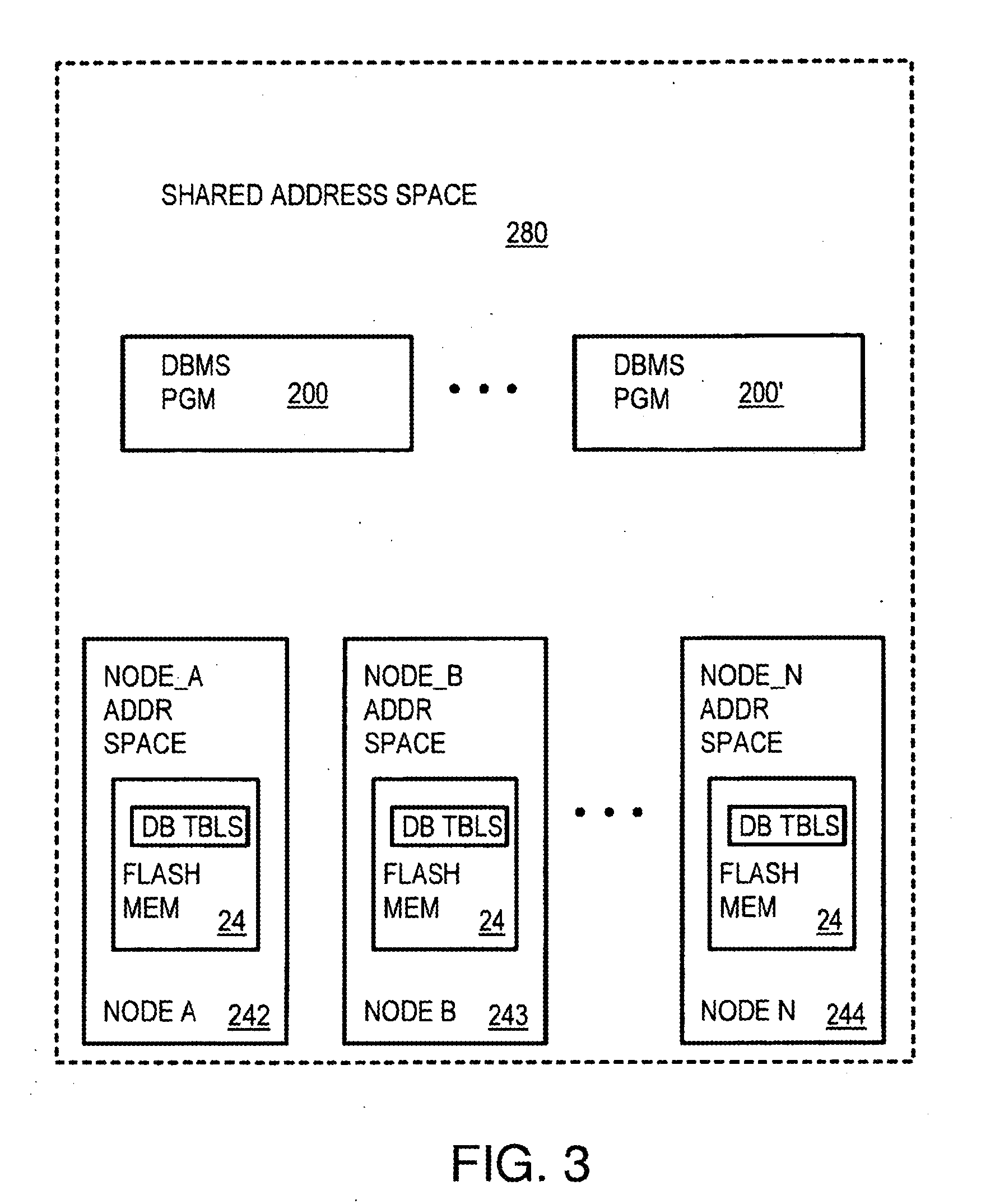Cluster of processing nodes with distributed global flash memory using commodity server technology
a commodity server and processing node technology, applied in the field of distributed object stores, can solve the problems of central resource bottleneck, and inability to keep up with the performance of the disk,
- Summary
- Abstract
- Description
- Claims
- Application Information
AI Technical Summary
Problems solved by technology
Method used
Image
Examples
Embodiment Construction
[0048]Approaches for shared global memory accessible to a plurality of processes in a distributed object store that is implemented, at least partially, on flash memory are described. In the following description, for the purposes of explanation, numerous specific details are set forth in order to provide a thorough understanding of the embodiments of the invention described herein. It will be apparent, however, that the embodiments of the invention described herein may be practiced without these specific details. In other instances, well-known structures and devices are shown in block diagram form in order to avoid unnecessarily obscuring the embodiments of the invention described herein.
[0049]FIG. 3 shows a database management system that has multiple instances running in a shard memory space accessing a database that is distributed across flash memory in many nodes. Rather than storing the database on a single compute node, the database is partitioned so that different tables are ...
PUM
 Login to View More
Login to View More Abstract
Description
Claims
Application Information
 Login to View More
Login to View More - R&D
- Intellectual Property
- Life Sciences
- Materials
- Tech Scout
- Unparalleled Data Quality
- Higher Quality Content
- 60% Fewer Hallucinations
Browse by: Latest US Patents, China's latest patents, Technical Efficacy Thesaurus, Application Domain, Technology Topic, Popular Technical Reports.
© 2025 PatSnap. All rights reserved.Legal|Privacy policy|Modern Slavery Act Transparency Statement|Sitemap|About US| Contact US: help@patsnap.com



